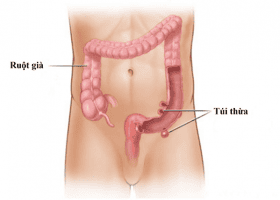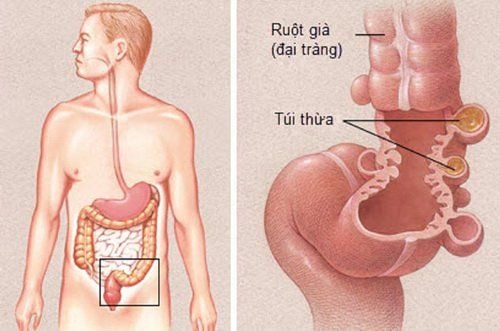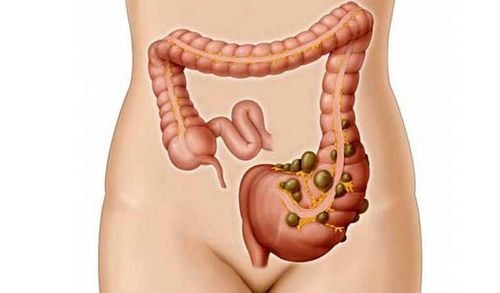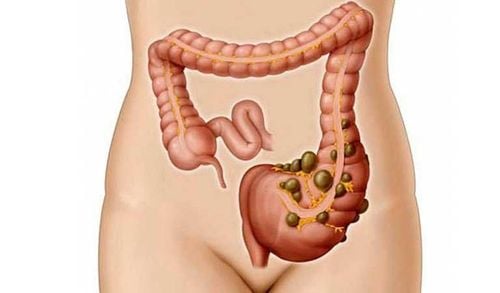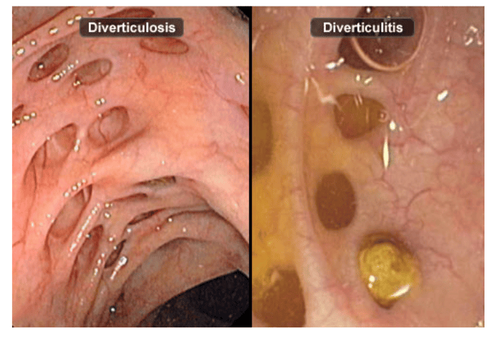This is an automatically translated article.
If not detected and treated promptly, diverticulitis can lead to bleeding, abscess.... endangering the patient's life.
1. What is diverticulitis?
Sometimes small, bulging pouches (called diverticula) form in the colon. This condition is called diverticulosis. If the pouch becomes inflamed or infected it is called diverticulitis.
Diverticulosis is very common and most people never know they have it. Half of people over the age of 60 can develop diverticulitis. But only 10%-25% of cases go on to develop diverticulitis. Diverticulitis often develops when the diverticulum is blocked by waste, leading to fluid in the intestinal wall and infection
People with diverticulitis often have no outward symptoms. The symptoms of diverticulitis are more noticeable. May include abdominal bloating, abdominal pain, typically in the lower left abdomen, plus diarrhea, chills, and low-grade fever.
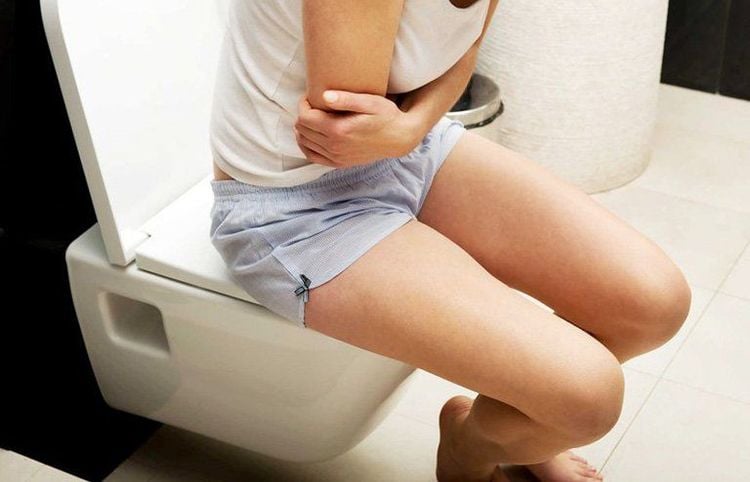
Tiêu chảy có thể là dấu hiệu của bệnh viêm túi thừa
When a hole develops between the sac and a blood vessel, bleeding may occur. This can cause large amounts of blood to suddenly appear in the stool. The condition is usually painless and the bleeding usually stops on its own. But in some cases, the bleeding is so severe that you need a blood transfusion or surgery. If you experience bleeding, contact your doctor immediately.
2. What causes diverticulitis?
Most gastrointestinal diverticula form in the colon. Under pressure, diverticula often develop in naturally weak places in the colon wall. This results in a diverticulum forming and protruding from the colon.
The exact cause of diverticulitis is still unknown. Some theories suggest that increased pressure in the colon may weaken the diverticulum wall, leading to inflammation. Others believe that the narrow openings of the diverticulum are places where stool collects, which can lead to diverticulitis. Or a blockage in the mouth of the diverticulum can reduce blood flow, leading to inflammation.
3. Eating a lot of fiber helps relieve pain caused by diverticula
A low-fiber diet has been linked to diverticulitis. Researchers have not been able to explain this link. However, adding more fiber to the diet can help prevent constipation and may reduce the risk of diverticulitis in the colon.
It's not too difficult to find fiber-rich food sources to supply the body, a lot of foods are rich in fiber. Fiber is found in fruits, vegetables, whole grains, and legumes (dried beans, peas, and lentils). Make smart food choices, you should use brown rice and whole-grain pasta in place of other common foods. And add veggies to your favorite dishes like pizza, stews, and spaghetti sauce. The American Dietetic Association recommends that women get about 25 grams of fiber and men about 38 grams per day.

Bổ sung chất xơ vào chế độ ăn uống giúp giảm nguy cơ viêm túi thừa ở đại tràng.
4. Diagnosis and treatment of diverticulitis
Since diverticulitis often causes no symptoms, it is usually diagnosed only when the patient is diagnosed for another reason. The diverticulum can be seen through X-ray or endoscopy. When diverticulitis leads to an abscess, ultrasound and CT scans of the abdomen and pelvis can show pus.
Most patients with diverticulosis have few or no symptoms and do not require specific treatment. A high-fiber diet and fiber supplements are recommended to prevent constipation and the formation of multiple diverticula.
Diverticulitis with symptoms, such as abdominal pain, cramps and low fever, you just need to take antibiotics. As the condition worsens, your doctor may prescribe a thinner diet to allow your colon to recover. When the pain gets worse, or when you have a high fever or can't drink water, you need to stay in the hospital, get antibiotics, and don't eat or drink for several days.
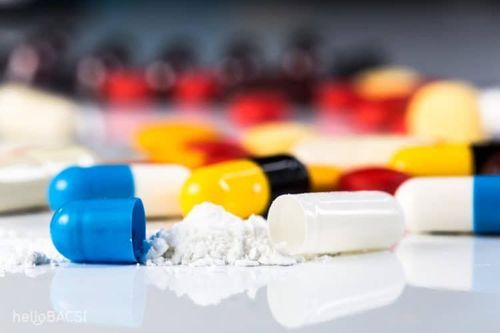
Thuốc kháng sinh được sử dụng trong trường hợp người bệnh mắc viêm túi thừa nhẹ
5. Complications of diverticulitis
When diverticulitis leads to a tear in the intestinal wall, pus can leak into the abdomen, causing peritonitis (infection of the abdominal cavity), abscess, bowel obstruction, and an opening (called a fistula) between the intestines and the urinary tract urinary tract or other organs in the abdomen or pelvis.
6. When is diverticulitis surgery?
Surgery is needed when diverticulitis does not respond to medical treatment. Surgery usually involves draining the pus and removing the segment of the colon that contains the diverticulum. Resection of a bleeding diverticulum is necessary for patients with persistent bleeding. Surgery may also be needed for any patient with a diverticulum eroding into the bladder, causing a severe urinary tract infection, and to treat an intestinal obstruction.
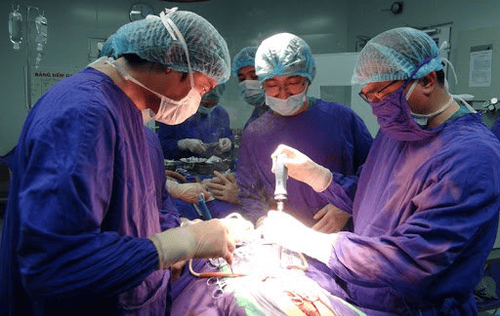
Phẫu thuật là một phương pháp điều trị viêm túi thừa
7. Prevent diverticulitis
Once formed, the diverticulum will be permanent. Following a high-fiber diet helps prevent constipation and relieves symptoms caused by diverticula. There is no evidence that foods such as nuts cause diverticulitis. But if you feel they increase symptoms, you should eat other high-fiber foods. Drinking plenty of water and exercising regularly can also help.
Vinmec International General Hospital with a system of modern facilities, medical equipment and a team of experts and doctors with many years of experience in medical examination and treatment, patients can rest assured to visit examination and treatment at the Hospital.
To register for examination and treatment at Vinmec International General Hospital, you can contact Vinmec Health System nationwide, or register online HERE.
Reference source: webmd.com
MORE
Why do you get diverticulitis? Differentiate appendicitis from diverticulitis. Laparoscopic right colectomy laparoscopic surgery





